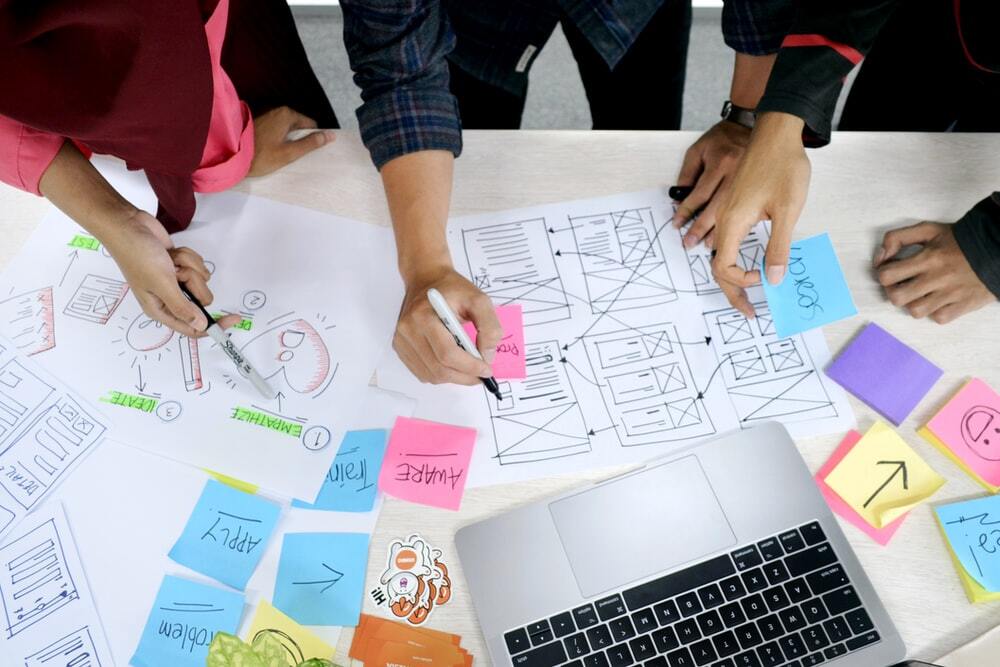As a human capital consulting firm, our specialty is all things people. Through experience and observation of clients’ problems, we realised that merely providing tools is inadequate for solving all talent-related issues.
Thus, we added consulting services to our service offerings, allowing us to innovate and enhance our arsenal of solutions to better support clients’ organisational goals and boost the effectiveness of the Human Resource function; adding long term business value to the organisation.


A competency model is the compilation of a set of competencies to form a framework which ascertains the behaviours, skills, experience and knowledge required for one to perform successfully within a defined work setting. In other words, a competency model helps to define the expectations for success for each role or function within the organisation.
While there is no standard set of competencies for any given role, function or job level; a competency model can typically comprise of the following:
I. Core competencies
Consisting of competencies that are the foundation applied across the board for all employees within an organisation, these competencies guide individuals to work in supporting the organisation’s goals, mission and vision through competencies such as teamwork, problem solving or result orientation.
II. Functional competencies
Based on the technical requirements of a role, functional competencies are designed to guide the defined tasks for each level of responsibility and seniority of an occupational role. These refer to the individual’s competence in terms of performing tasks such as operating machinery/equipment, performing accounting entries or using computer programming language.
A key connector between an individual’s growth and performance to the organisation’s strategic goals, the competency model forms the foundation for the following organisational initiatives/purposes:
At People Psyence®, we can design competency models unique to organisations or help clients review/enhance their existing models based on organisational/industry best practices. Our deliverables would see competency models that cover breadth and depth, in terms of job group, levels or grades with specific behavioural indicators.


Succession planning is a systematic approach to identifying and developing future leaders for the organisation. The aim of succession planning is to create a ready talent pool, with the best suited talents to succeed mission critical positions within the organisation.
Besides advocating the use of valid and reliable assessment tools that help identify the strengths and development needs for individuals to be included in the talent pool, People Psyence® helps organisations build success profiles of critical positions, which are instrumental in driving the continuous success of the organisation. These success profiles contain the key requirements that are critical for the individual to succeed in the targeted position, complementing the basic requirements and attributes outlined in the original job descriptions.
The results from a suite of assessments (e.g., behavioural assessment, aptitude test, mental toughness as well as competency assessments) can be used to create further insights such as talent nine-box grids, successor readiness analysis as well as talent report cards.


Talent management is the entire spectrum of HR processes, aimed at creating an engaged and empowered workforce, which makes it possible for organisations to reach their goals. With the intent to enhance the strategic business value of organisations, talent management includes core HR processes to attract, recruit, onboard, develop, motivate and retain recognised talents within the organisation.
People Psyence® advocates the use of a holistic and robust talent assessment approach to help organisations make better informed decisions when selecting the most suitable individuals to join their organisation or when identifying high potentials among existing employees, who are more likely to help drive business performance. For comprehensive insights of the individuals, the assessments should comprise of multiple dimensions such as cognitive ability, behaviour, competency, values and emotions/mental toughness.
Comprehensive reports clearly highlight the individuals’ strengths that are advantageous for their future roles and development areas that can help them to perform better and add value to the organisation. Based on these insights, targeted development programmes can be designed and tailored for individual development, as well as group development.
Additionally, information from these reports can also help organisations in job-person matching, by selecting individuals with the highest compatibility scores. Compatibility scoring is a unique value-added service by People Psyence®, done by mapping our recommended assessments to clients’ competency models and benchmarks, using our very own algorithm and platform.


Design thinking is a human-centred approach to designing solutions. It is an iterative process that focuses on understanding users through empathy and prototyping. By understanding users’ needs, designers can gain insights into the desirability and synthesise this with business requirements and technological feasibility to deliver meaningful solutions for users and stakeholders.
This method consists of 5 stages — Empathise, Define, Ideate, Prototype and Test. It is most useful when you want to tackle problems that are ill-defined or unknown. People Psyence® has helped property development, conglomerates and financial services organisations to introduce and apply design thinking in innovating solutions to their problems.
Here are just a few examples of wicked problems you can solve with design thinking:
• Socialising an organisation’s internal values
• Delivering meaningful onboarding experiences
• Redesigning aftersales customer experience
• Reimagining the city living experience for urbanites
Develop a deep understanding of the challenge
Clearly articulate what you want to solve
Brainstorm potential solutions then select and develop the solution
Design a prototype (or series of prototypes) to test all or part of your solution
Engage in continuous short-cycle innovation process to continually improve your design


The ‘Psyence®’ of people is not one-size-fits-all. Every organisation has its own unique culture, values, and problems. Co-creation involves our consultants working closely together with the client in designing solutions. This allows for a better understanding of the people and the challenges in the organisation, resulting in tailor made solutions that are more relevant and effective.


At People Psyence®, we believe that people-related solutions are more sustainable when they are conducted from the inside out. Thus, we have taken it upon ourselves to equip clients with the knowledge and skills to develop people-centred solutions internally within their organisation.
Our consultants are HRDF-qualified and are experienced in facilitating Design Thinking, Gamification, and Co-Creation workshops, both physically and virtually.
KWAP had just refined and updated their corporate values and sought to socialize these new values in a company-wide initiative. They wanted to gamify the values campaign in order to achieve high participation rate and track employees’ understanding of the new values.
“Gamification built with Design Thinking: A corporate values campaign in financial services”
People Psyence® utilized Design Thinking to develop a values campaign to raise awareness
of KWAP’s newly updated and refined vision, mission and values. There was a 99%
participation rate, with over 74% of the workforce reporting a greater understanding of the
organisation’s vision, mission and values.
AKPK wanted their employees to internalize their cultural values. To ensure that all their employees, both at the headquarters and in the various branches, would internalize the cultural values and demonstrate the related behaviors, AKPK sought to gamify their values campaign.
“Corporate Culture Campaign with 244% Increase in Employee Engagement ”
People Psyence® designed a gamified value internalization campaign to facilitate internalization of AKPK’s cultural values and improve employees’ work ethics and overall performance.
The gamified experience was identified as a key factor for the campaign’s success. There saw a 244% increase in employee engagement and was fundamental in getting buy-in from management for more flexible work arrangements, resulting in a change in their corporate culture.
AmBank Group HR were facing challenges in encouraging non-management employees to contribute opinions and feedback in a public setting. Hence, they sought to gamify the next Townhall in the hopes of higher engagement and participation.
“Banking on social interactions for a successful digital journey”
To supplement their initiative in digitalizing the customer experience, AmBank sought to increase communication within the Group HR department. People Psyence® utilised a co-creation approach, facilitating and partnering the AmBank project team in designing a digital journey to increase participation and engagement in the upcoming HR Townhall.
There was a 90% participation rate, with the Townhall seeing more questions and discussions occurring than previous Townhalls.